- About
- News
- Faculty
-
Academics
- School of Physical Science and Technology (SPST)
- School of Life Science and Technology (SLST)
- School of Information Science and Technology (SIST)
- School of Entrepreneurship and Management (SEM)
- School of Creativity and Art (SCA)
- Institute of Humanities (IH)
- School of Biomedical Engineering (BME)
- Shanghai Institute for Advanced Immunochemical Studies (SIAIS)
- iHuman Institute
- Institute of Mathematical Sciences (IMS)
- Center for Transformative Science (CTS)
- Institute of Carbon Neutrality (ICN)
- Shanghai Clinical Research and Trial Center
- Tech Transfer
- Global
- Campus Life
-
 Recently, the research team led by SLST Associate Professor Sun Bo published a research article in PNAS entitled “The convergence of head-on DNA unwinding forks induces helicase oligomerization and activity transition”, revealing a novel activity transition pathway of a DNA-repair-involved helicase.Helicases are ubiquitous molecular motors found in all organisms from phages t...
Recently, the research team led by SLST Associate Professor Sun Bo published a research article in PNAS entitled “The convergence of head-on DNA unwinding forks induces helicase oligomerization and activity transition”, revealing a novel activity transition pathway of a DNA-repair-involved helicase.Helicases are ubiquitous molecular motors found in all organisms from phages t... -
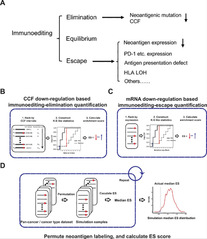 Tumor immunotherapy, enhancing the immune system to kill tumor cells and to exert clinical effects, is a revolutionary breakthrough in the field of tumor therapy. Tumor neoantigens are polypeptides with antigenicity resulting from DNA mutations and the key factors in determining the immunogenicity of tumor cells and the clinical efficacy of tumor immunotherapy. However, neoantigen immunogenicity p...
Tumor immunotherapy, enhancing the immune system to kill tumor cells and to exert clinical effects, is a revolutionary breakthrough in the field of tumor therapy. Tumor neoantigens are polypeptides with antigenicity resulting from DNA mutations and the key factors in determining the immunogenicity of tumor cells and the clinical efficacy of tumor immunotherapy. However, neoantigen immunogenicity p... -
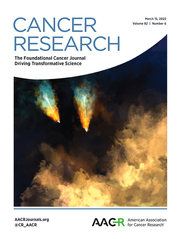 Professor Liu Ji-Long's group from SLST published a cover story entitled Combined inactivation of CTPS1 and ATR is synthetically lethal to MYC-overexpressing cancer cells in the March 15, 2022 issue of Cancer Research. This work demonstrates that selectively inhibiting CTPS1 combined with ATR inhibitor represents a promising strategy for the treatment of MYC-driven cancer in vitro and in ...
Professor Liu Ji-Long's group from SLST published a cover story entitled Combined inactivation of CTPS1 and ATR is synthetically lethal to MYC-overexpressing cancer cells in the March 15, 2022 issue of Cancer Research. This work demonstrates that selectively inhibiting CTPS1 combined with ATR inhibitor represents a promising strategy for the treatment of MYC-driven cancer in vitro and in ... -
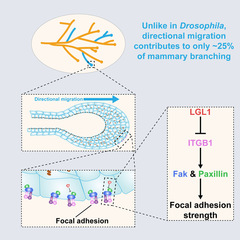 In the quest for understanding how the mammary gland epithelium forms its distinctive branching pattern, a team led by SLST researchers found that it uses a completely different system than what was previously believed In their new study, published on February 15 in Cell Reports, scientists from Lyu Pengfei’s group found that mammary gland epithelium lacking the polarity gene Lgl1 ...
In the quest for understanding how the mammary gland epithelium forms its distinctive branching pattern, a team led by SLST researchers found that it uses a completely different system than what was previously believed In their new study, published on February 15 in Cell Reports, scientists from Lyu Pengfei’s group found that mammary gland epithelium lacking the polarity gene Lgl1 ... -
 On January 25, Associate Professor Guan Ji-Song’s research group of SLST published a research paper in Neuron entitled, “ASH1L haploinsufficiency results in autistic-like phenotypes in mice and links Eph receptor gene to autism spectrum disorder”. This study describes the role of Ash1l mutation in autism spectr...
On January 25, Associate Professor Guan Ji-Song’s research group of SLST published a research paper in Neuron entitled, “ASH1L haploinsufficiency results in autistic-like phenotypes in mice and links Eph receptor gene to autism spectrum disorder”. This study describes the role of Ash1l mutation in autism spectr... -
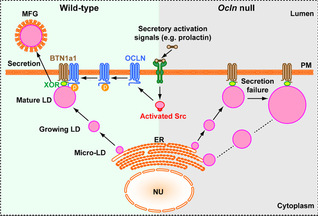 The latest research by Associate Professor Lyu Pengfei’s group at SLST has found that the traditional tight junction component Occludin plays a crucial regulatory role in lipid droplet secretion, one of the fundamental cellular behaviors. On January 18th, 2022, the work from Lyu's lab was published online in PLOS Biology, in an article entitled “Occludin is a target of Src kinase and promote...
The latest research by Associate Professor Lyu Pengfei’s group at SLST has found that the traditional tight junction component Occludin plays a crucial regulatory role in lipid droplet secretion, one of the fundamental cellular behaviors. On January 18th, 2022, the work from Lyu's lab was published online in PLOS Biology, in an article entitled “Occludin is a target of Src kinase and promote... -
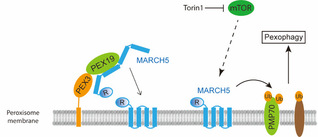 Mitochondria and peroxisomes are widely recognized as independent but functionally close-related organelles. Both are critical for the metabolism of lipids and reactive oxygen species. MARCH5 is a mitochondrion-associated ubiquitin ligase, with a function of regulating mitochondria fission and fusion, so as to maintain a dynamic balance of mitochondria. It also promotes mitophagy and regulates mit...
Mitochondria and peroxisomes are widely recognized as independent but functionally close-related organelles. Both are critical for the metabolism of lipids and reactive oxygen species. MARCH5 is a mitochondrion-associated ubiquitin ligase, with a function of regulating mitochondria fission and fusion, so as to maintain a dynamic balance of mitochondria. It also promotes mitophagy and regulates mit... -
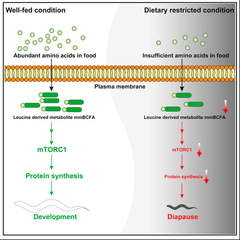 Food is one of the most important resources for the growth and development of all animals including humans. Along with other key factors, such as water and air, food is often the rate-limiting factor that determines the expansion and decay of the animal population, due to its relative scarcity in the environment. For this reason, animals have evolved a powerful nutrition-sensing system to cor...
Food is one of the most important resources for the growth and development of all animals including humans. Along with other key factors, such as water and air, food is often the rate-limiting factor that determines the expansion and decay of the animal population, due to its relative scarcity in the environment. For this reason, animals have evolved a powerful nutrition-sensing system to cor... -
 On October 19, 2021, Assistant Professor He Shuijin’s group at SLST published a research article entitled “PUPIL enables mapping and stamping of transient electrical connectivity in developing nervous systems” in Cell Reports. In this study, they modified PUP-IT (developed by SLST Assistant Professor Zhuang Min, (read more at https://www.shanghaitech.edu.cn/eng/2018/0815/c1418a31492/p...
On October 19, 2021, Assistant Professor He Shuijin’s group at SLST published a research article entitled “PUPIL enables mapping and stamping of transient electrical connectivity in developing nervous systems” in Cell Reports. In this study, they modified PUP-IT (developed by SLST Assistant Professor Zhuang Min, (read more at https://www.shanghaitech.edu.cn/eng/2018/0815/c1418a31492/p... -
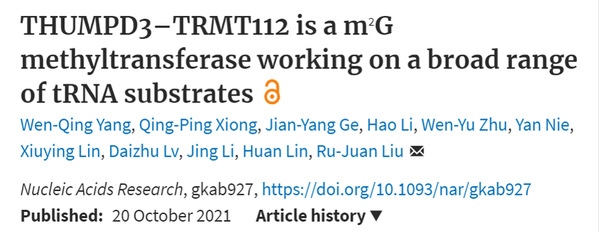 On October 20, Assistant Professor Liu Ru-Juan and her colleagues at SLST, together with her collaborators, published a research article entitled “THUMPD3-TRMT112 is a m2G methyltransferase working on a broad range of tRNA substrates” in Nucleic Acids Research. This study reveals that THUMP domain-containing protein 3 (THUMPD3) interacts with an auxiliary protein (methyltransferase activato...
On October 20, Assistant Professor Liu Ru-Juan and her colleagues at SLST, together with her collaborators, published a research article entitled “THUMPD3-TRMT112 is a m2G methyltransferase working on a broad range of tRNA substrates” in Nucleic Acids Research. This study reveals that THUMP domain-containing protein 3 (THUMPD3) interacts with an auxiliary protein (methyltransferase activato... -
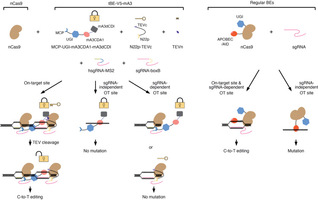 A team of scientists led by Prof. Chen Jia at the School of Life Science and Technology (SLST) of ShanghaiTech University, Prof. Yang Bei at Shanghai Institute of Advanced Immunochemical Studies (SIAIS) of ShanghaiTech University, Prof. Yang Li at the Shanghai Institute of Nutrition and Health of Chinese Academy of Sciences and Prof. Yin Hao at Wuhan University published a technical report article...
A team of scientists led by Prof. Chen Jia at the School of Life Science and Technology (SLST) of ShanghaiTech University, Prof. Yang Bei at Shanghai Institute of Advanced Immunochemical Studies (SIAIS) of ShanghaiTech University, Prof. Yang Li at the Shanghai Institute of Nutrition and Health of Chinese Academy of Sciences and Prof. Yin Hao at Wuhan University published a technical report article... -
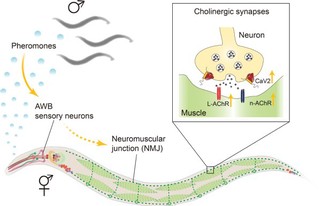 Sad tears from a lady can inhibit sexual impulse of a man. Why and how? Clues can be found from a recent study led by Professor Tong Xiajing at SLST. She and colleagues published a research article in the journal eLife entitled, “Male pheromones modulate synaptic transmission at the C. elegans neuromuscular junction in a sexually dimorphic manner. This study reveals how the ma...
Sad tears from a lady can inhibit sexual impulse of a man. Why and how? Clues can be found from a recent study led by Professor Tong Xiajing at SLST. She and colleagues published a research article in the journal eLife entitled, “Male pheromones modulate synaptic transmission at the C. elegans neuromuscular junction in a sexually dimorphic manner. This study reveals how the ma... -
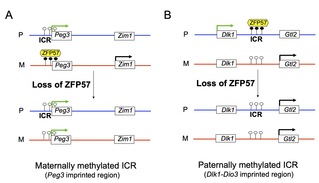 Genomic imprinting is essential for mammalian embryonic development, and is an epigenetic phenomenon present in higher animals and plants. Dysregulation of the imprinted genes causes diabetes, cancer and neurological disorders. Understanding the expression regulation mechanism of imprinted genes can help us understand human individual development and disease etiology and treatment. In a...
Genomic imprinting is essential for mammalian embryonic development, and is an epigenetic phenomenon present in higher animals and plants. Dysregulation of the imprinted genes causes diabetes, cancer and neurological disorders. Understanding the expression regulation mechanism of imprinted genes can help us understand human individual development and disease etiology and treatment. In a... -
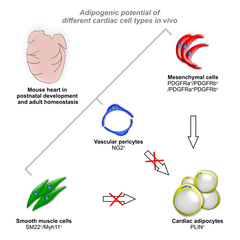 Recent studies have associated the aberrant accumulation of adipocytes in the heart with many cardiovascular diseases such as arrhythmogenic right ventricular cardiomyopathy and heart failure. Therefore, understanding the cellular origins of cardiac adipocytes (CAs) has important implications for the treatment of fat-associated cardiovascular diseases. Recently, a team of scientist...
Recent studies have associated the aberrant accumulation of adipocytes in the heart with many cardiovascular diseases such as arrhythmogenic right ventricular cardiomyopathy and heart failure. Therefore, understanding the cellular origins of cardiac adipocytes (CAs) has important implications for the treatment of fat-associated cardiovascular diseases. Recently, a team of scientist...
- per page 14 records total 113 records
- firstpage <<previouspage nextpage>> endpage
- PageNumber 4/9 jumpto

